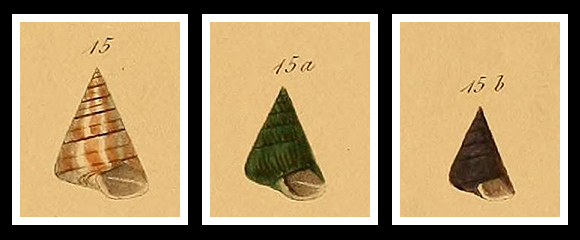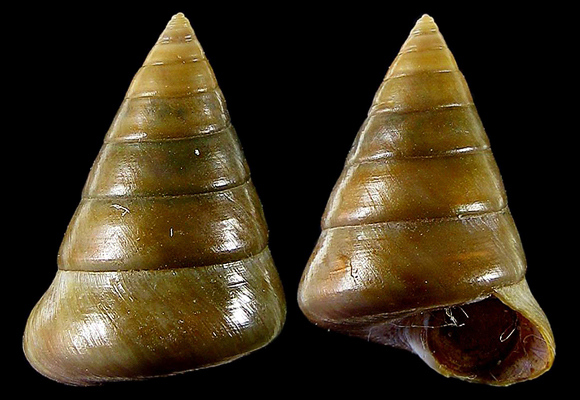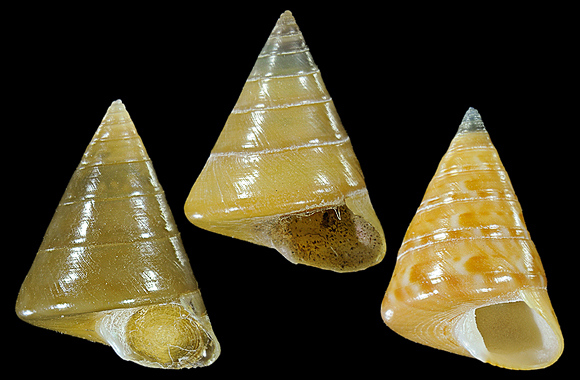
Named after the physician and collector N. Gualtieri.
Synonyms: gualtierii, laevigatus, neretinum…
In fact, Philippi had already described and named this species in 1836; his Trochus laevigatus appears in the Enumeratio… with a quite helpful description: « Testa turrito-conica, laevigata, apice non granulato, cingulo suturali nullo aut obsoleto, anfractibus planis; olivacea rarius fulva, concolore aut flammulata ». But the epithet laevigatus was already used for another taxon given by Gmelin in 1791, nowadays known as the Steromphala varia (Linnaeus, 1758). This is the reason why, in Küster’s Systematisches Conchylien Cabinet von Martini und Chemnitz Bd.20 Abt.3, Philippi, who is in charge of the Turbans and Topshells, redescribes and renames this species Trochus Gualterianus (p.69), putting his own previous Trochus laevigatus in synonymy.
Above, the species in Küster, plate XIII fig.15.

Original pictures provided by A. Nappo (IT) for the WoRMS.
– (CC BY-NC-SA) –

Source: gruppomalacologicoscalaria.org.
Original pictures provided by A. Nappo (IT).
– (CC BY-NC-SA) –